Abstract
1. Experiments were carried out on the cat's tongue to investigate regional variations in sensitivity to gustatory and thermal stimuli and to determine whether taste buds responding to particular stimuli are unique to specific areas. 2. In ten cats, integrated whole-nerve activity was recorded from the left chorda tympani during stimulation of the anterior, middle or posterior segments of the tongue. The level of activity produced by gustatory or thermal stimuli increased towards the posterior segment of the tongue but the relative activity evoked by each stimulus was similar for each segment. 3. Recordings were made from 108 single units dissected from the chorda tympani; fifty-five responded principally to gustatory stimuli, twenty were principally thermosensitive and thirty-three were purely mechanosensitive. 4. The gustatory units could be subdivided according to the stimuli which evoked the most vigorous discharge; there were sixteen salt units, eighteen acid units, nineteen salt-acid units and two quinine units. The salt units had a higher level of spontaneous activity than the other groups and the acid units supplied more fungiform papillae with a greater separation between them. 5. The two quinine units were both located near to the mid-line posteriorly but all other groups of gustatory, thermosensitive and mechanosensitive units were distributed over all regions of the dorsal surface of the tongue and did not have higher discharge rates in specific areas. 6. Individual stimulation of the fungiform papillae supplied by a single unit revealed that similar responses were evoked from each papilla but stimulation of a single papilla supplied by two or more units could evoke a different response in each unit. 7. This study revealed that the relative sensitivity to gustatory and thermal stimuli was similar in each region of the tongue and that taste buds responding to particular stimuli are not confined to specific areas.
Full text
PDF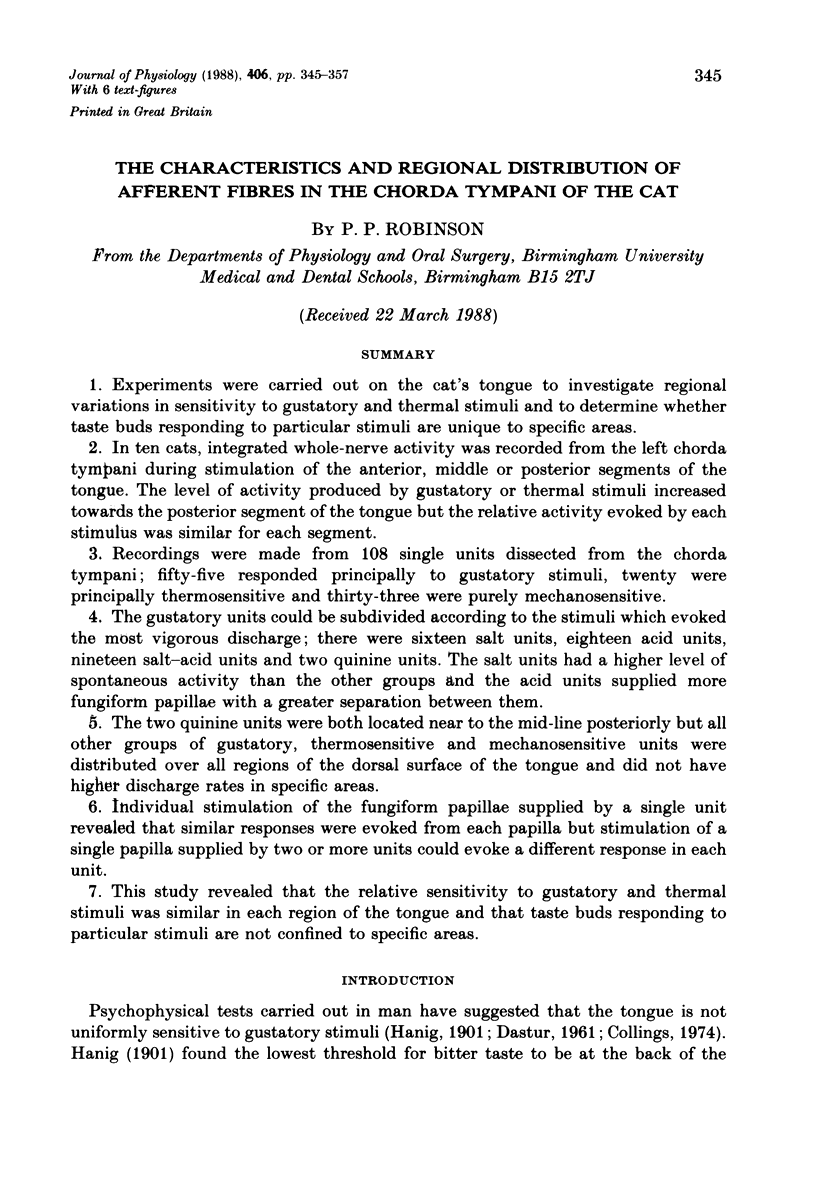
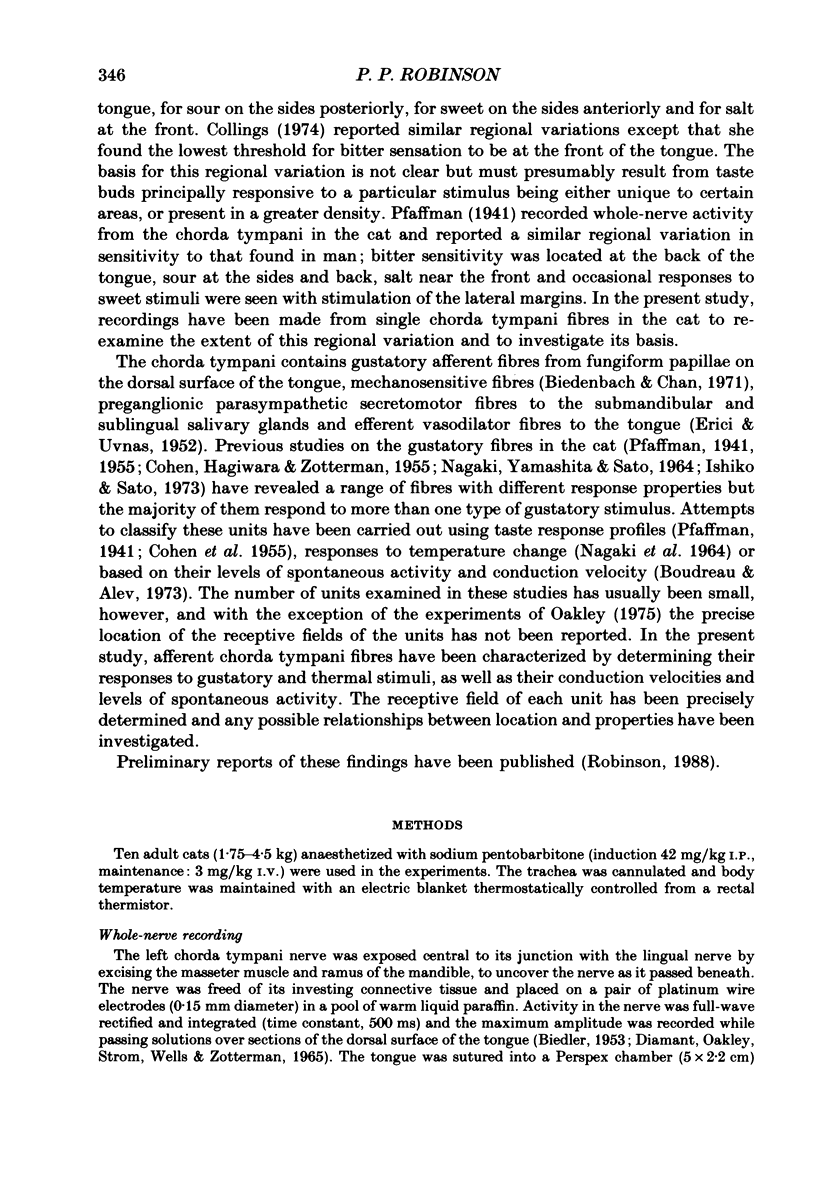
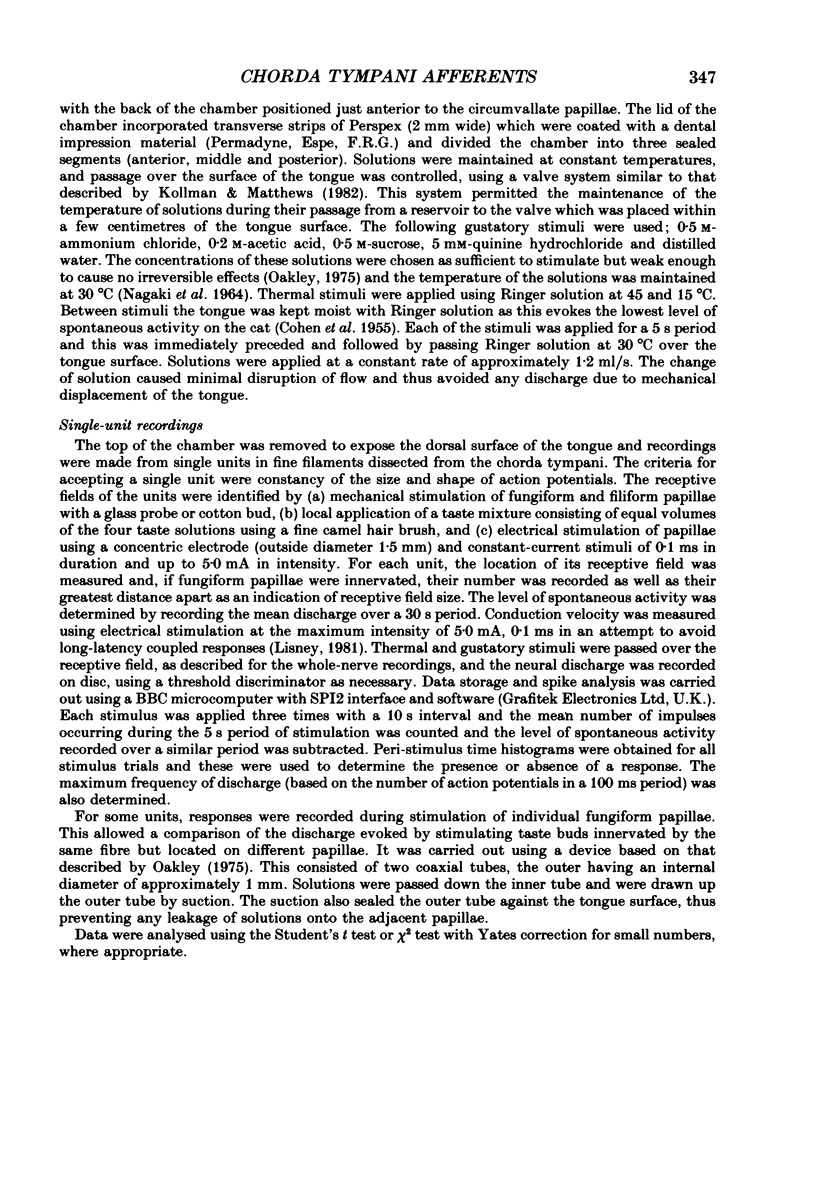
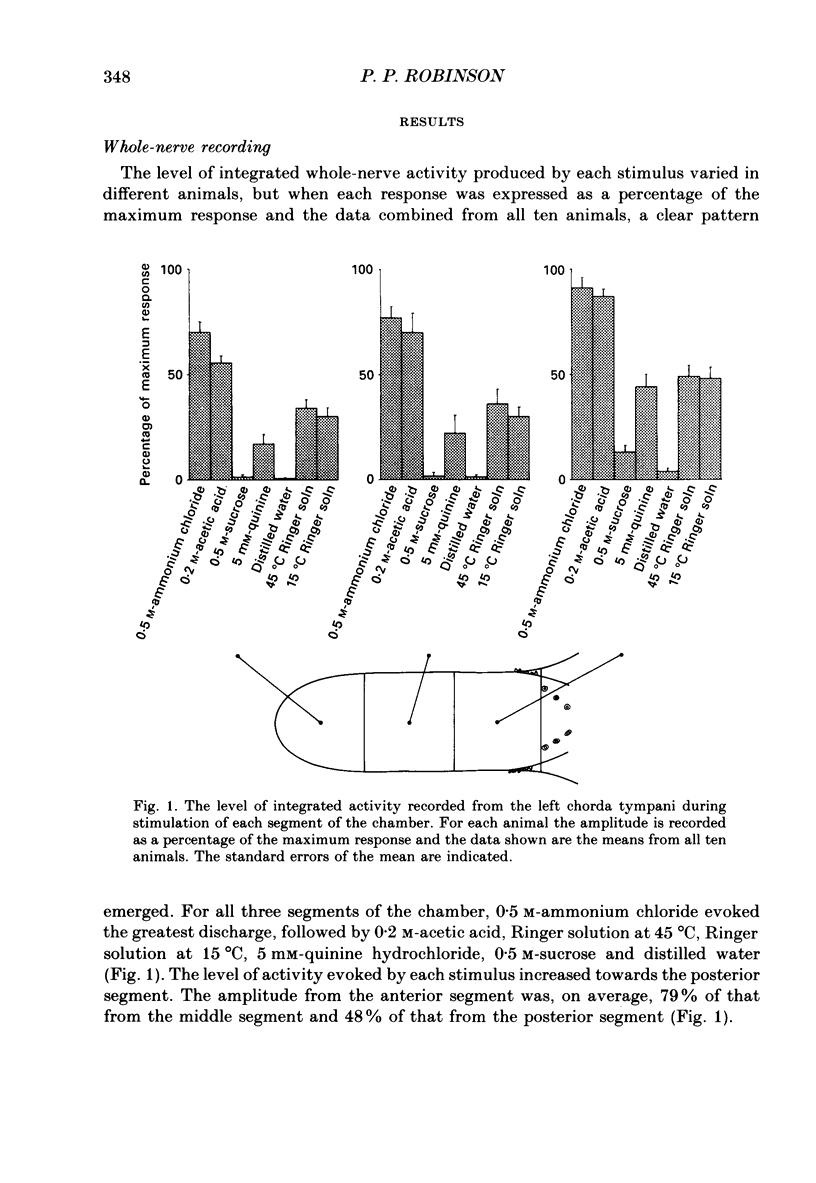
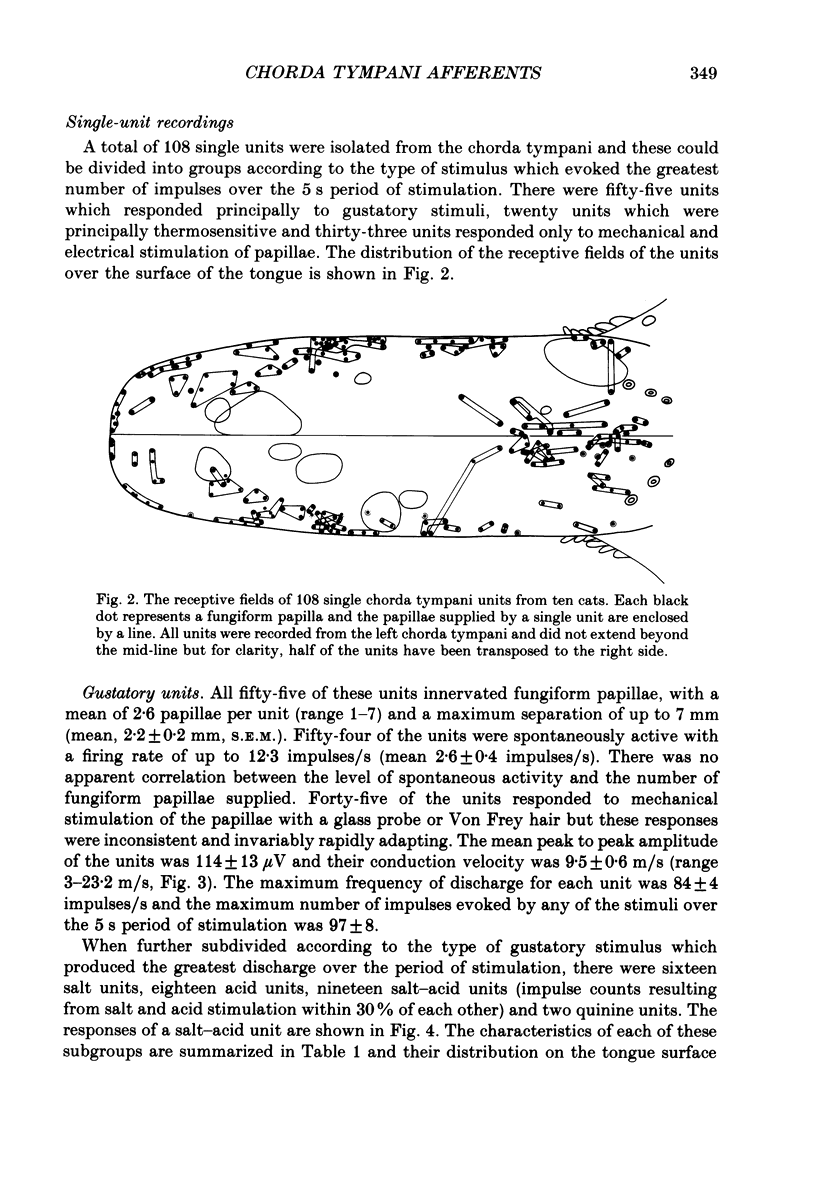
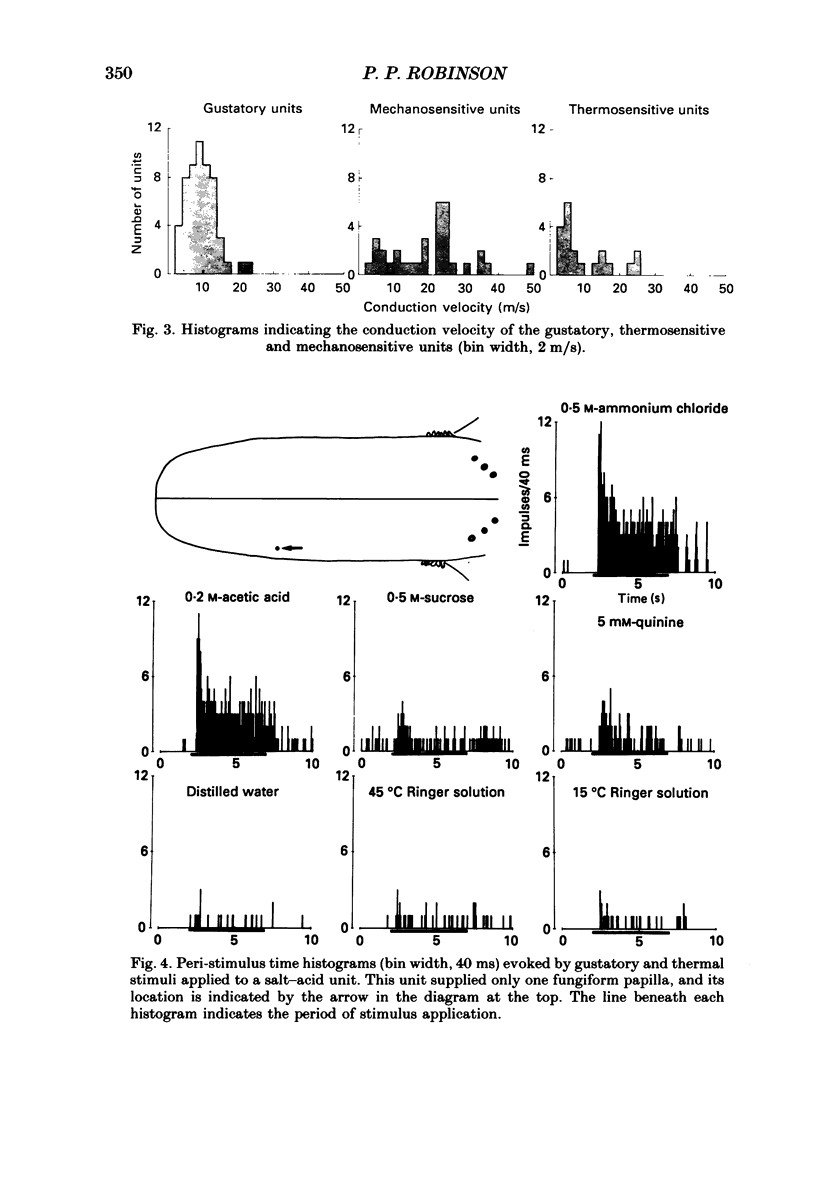
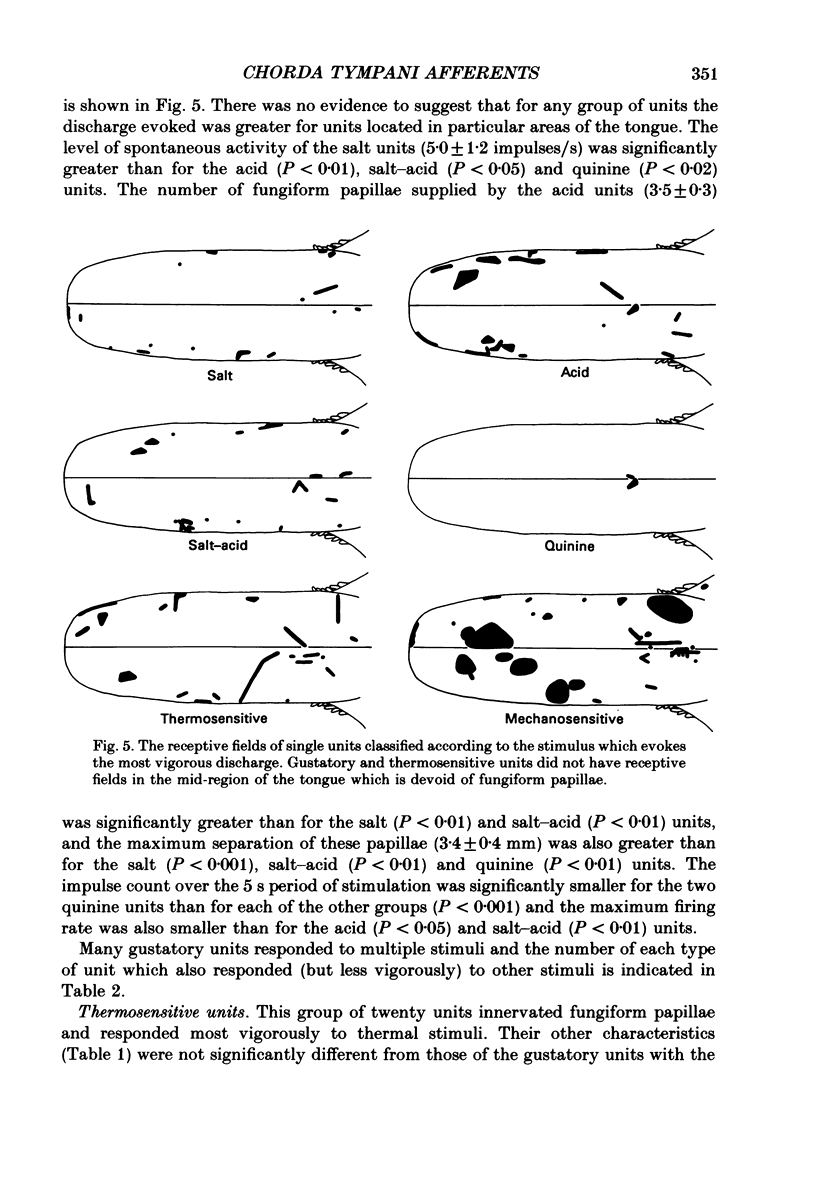
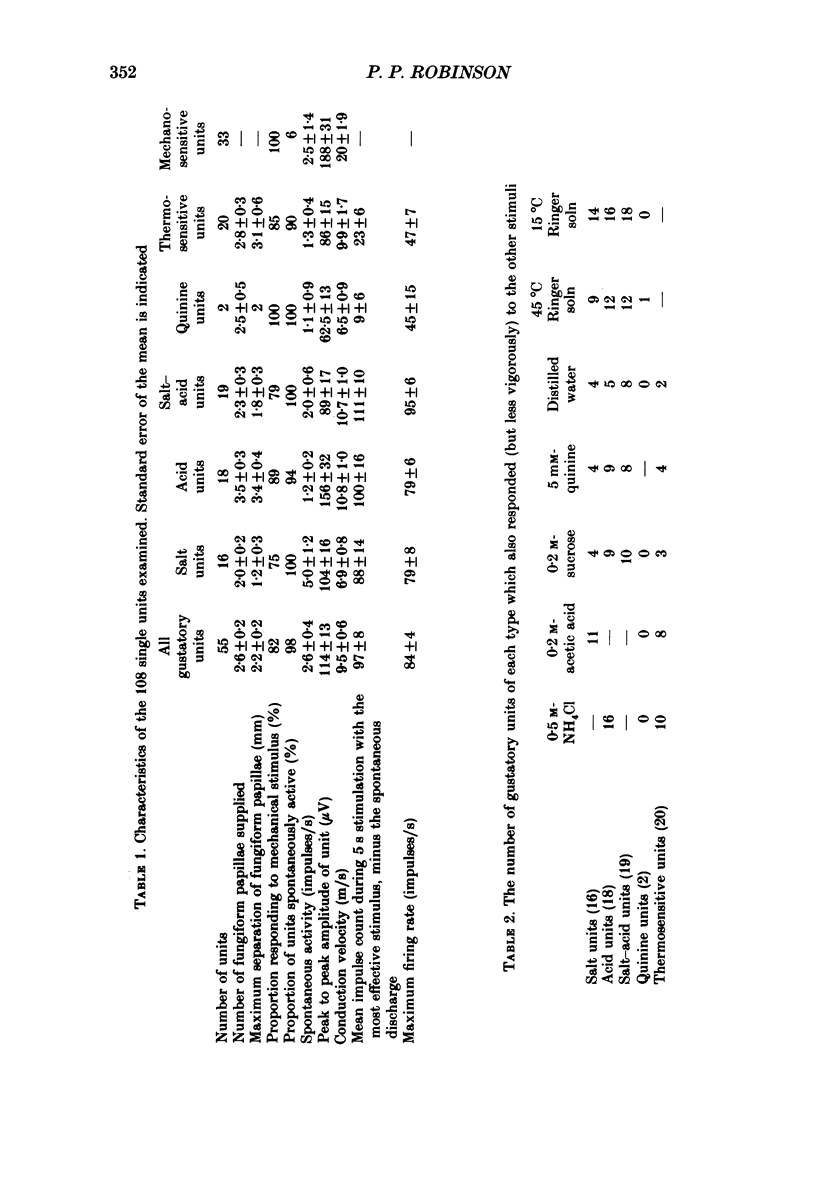
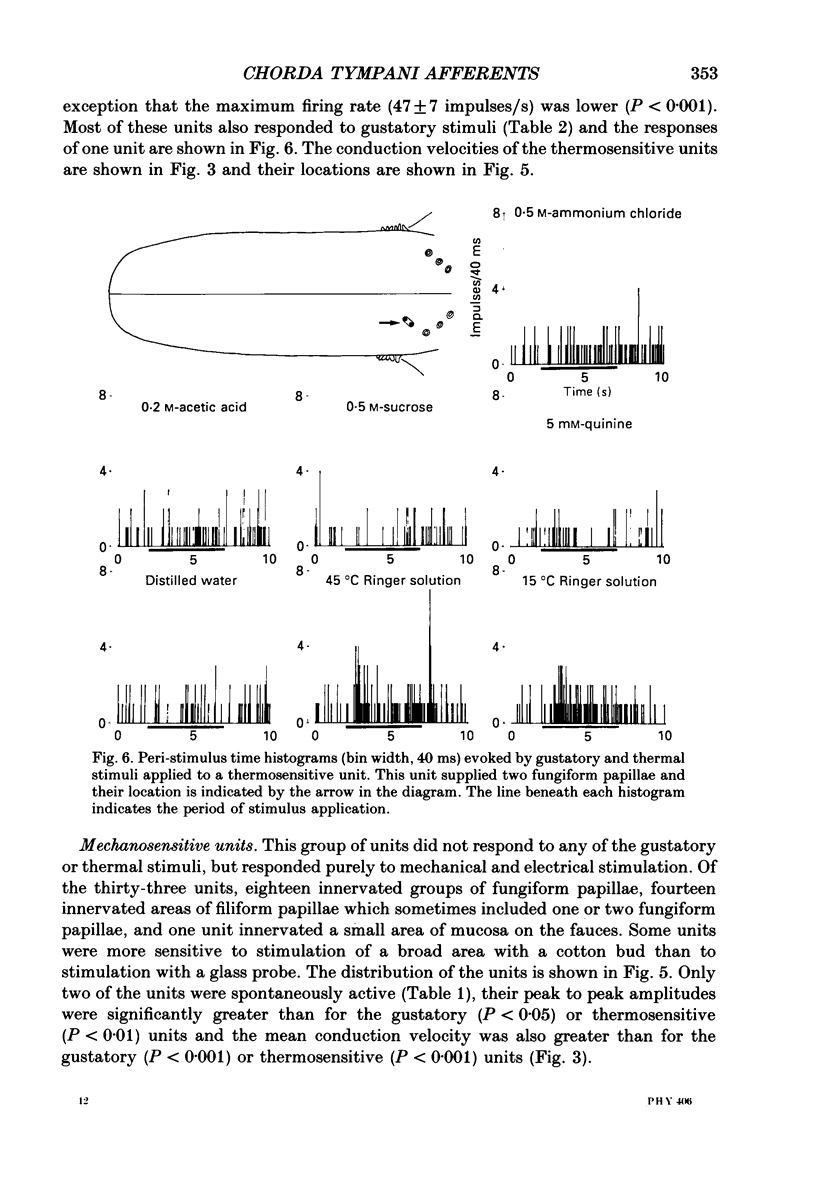
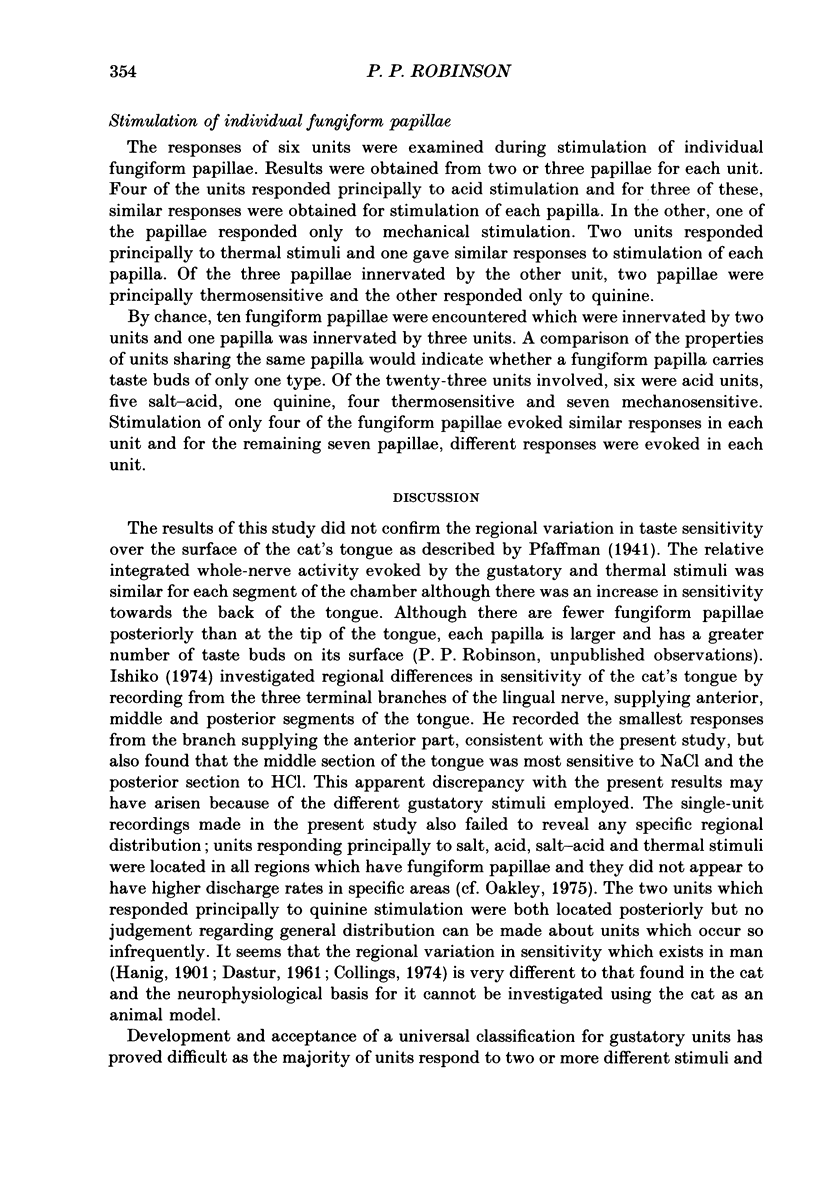
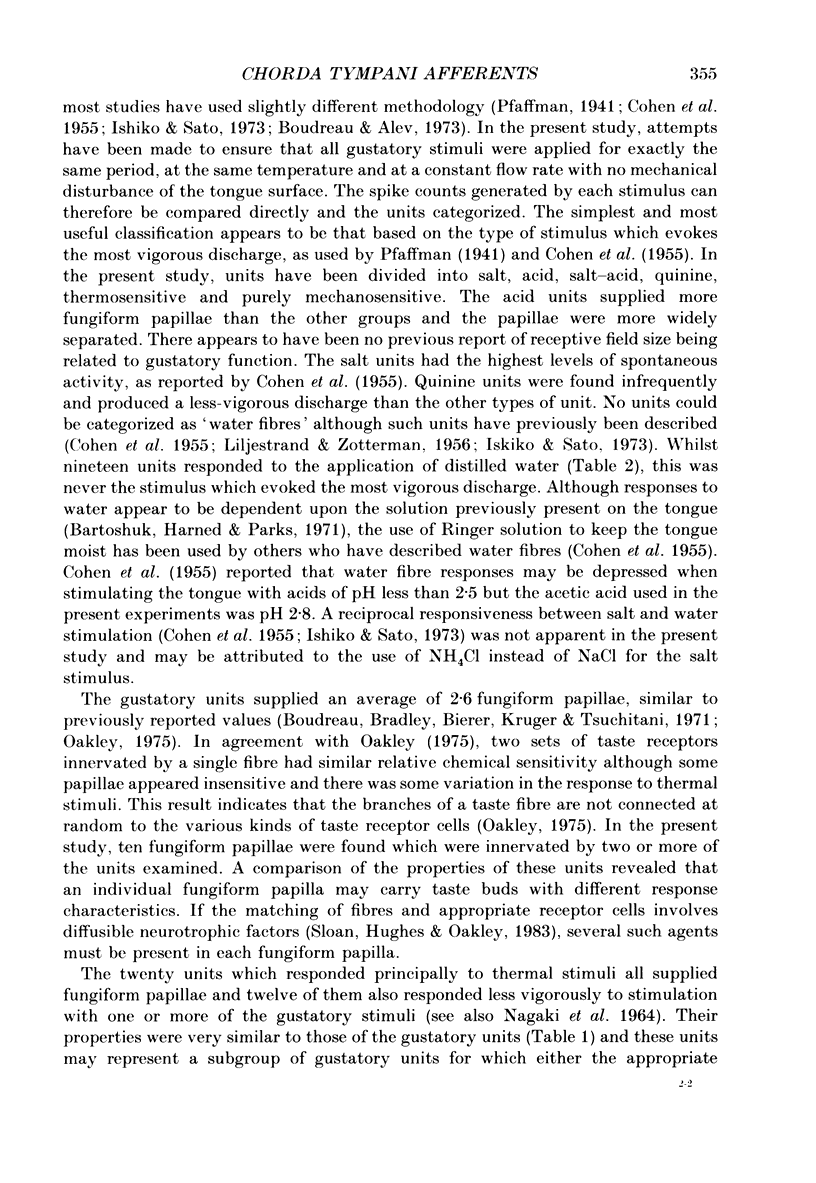
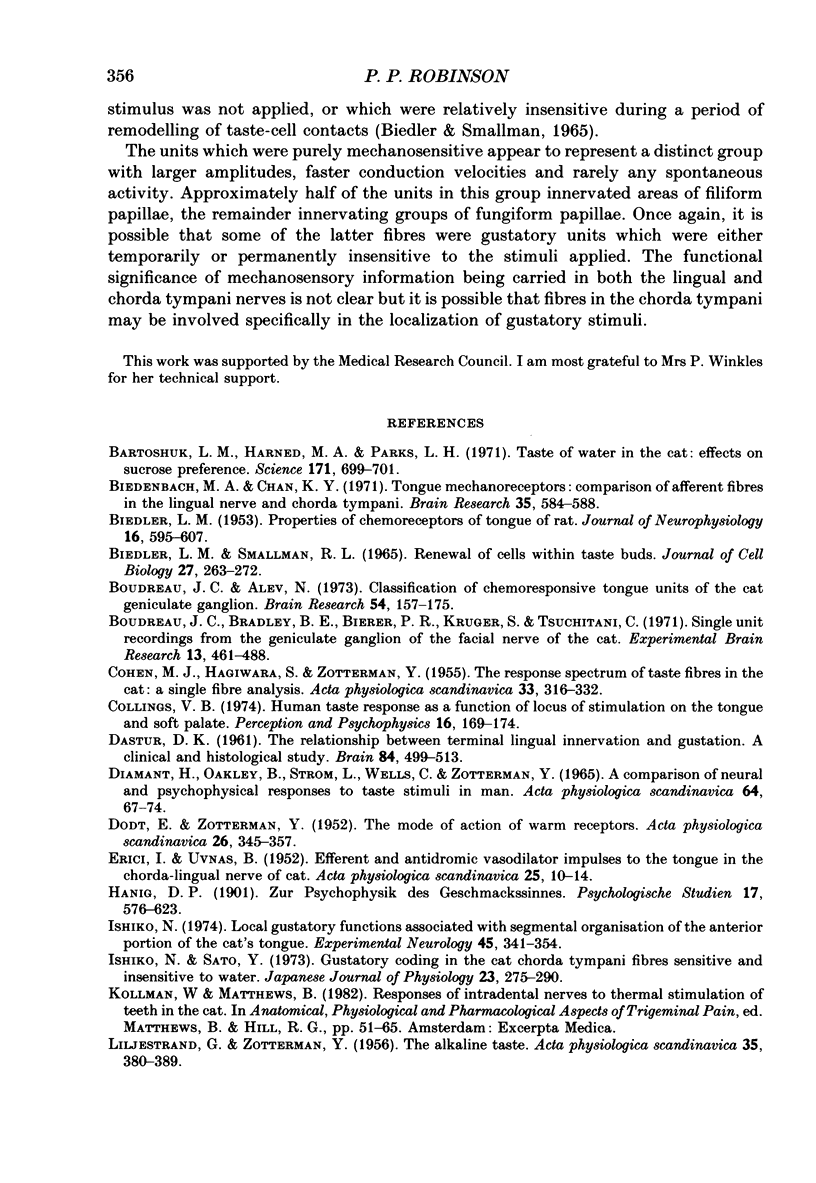
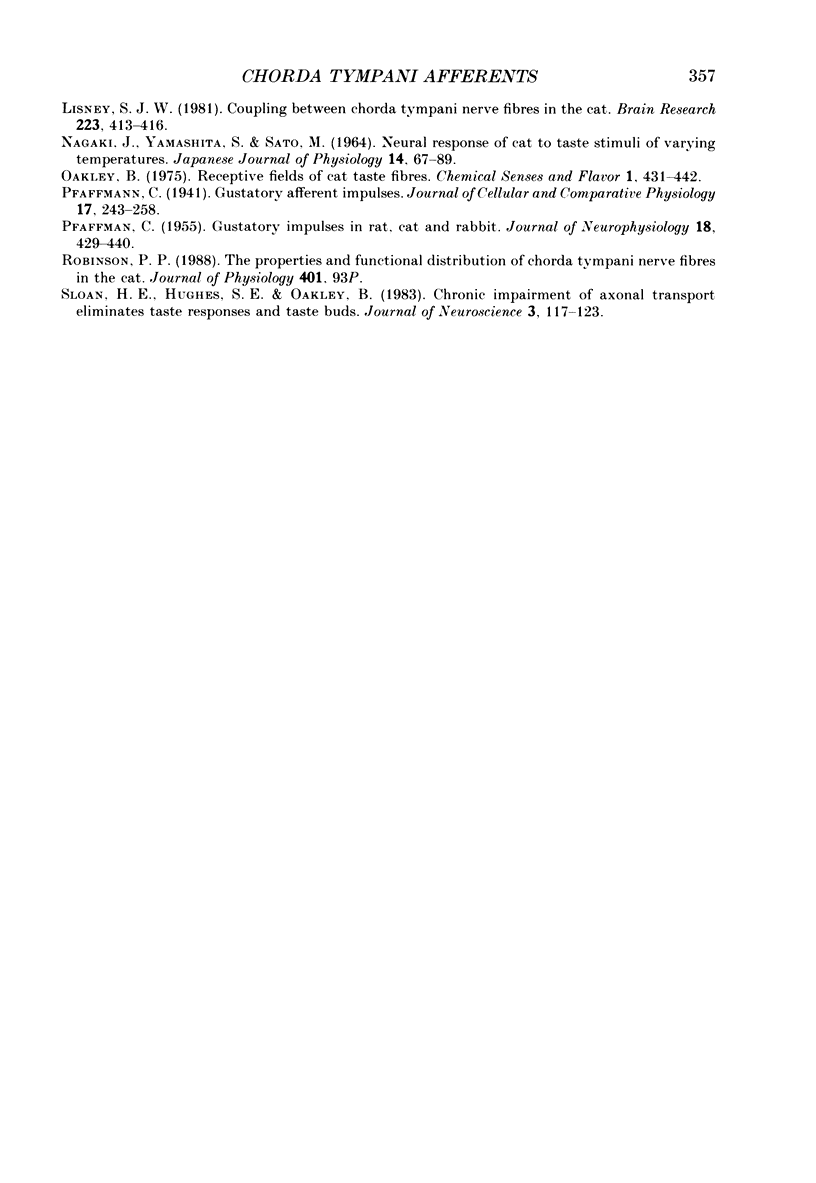
Images in this article
Selected References
These references are in PubMed. This may not be the complete list of references from this article.
- BEIDLER L. M. Properties of chemoreceptors of tongue of rat. J Neurophysiol. 1953 Nov;16(6):595–607. doi: 10.1152/jn.1953.16.6.595. [DOI] [PubMed] [Google Scholar]
- Bartoshuk L. M., Harned M. A., Parks L. H. Taste of water in the cat: effects on sucrose preference. Science. 1971 Feb 19;171(3972):699–701. doi: 10.1126/science.171.3972.699. [DOI] [PubMed] [Google Scholar]
- Beidler L. M., Smallman R. L. Renewal of cells within taste buds. J Cell Biol. 1965 Nov;27(2):263–272. doi: 10.1083/jcb.27.2.263. [DOI] [PMC free article] [PubMed] [Google Scholar]
- Biedenbach M. A., Chan K. Y. Tongue mechanoreceptors: comparison of afferent fibers in the lingual nerve and chorda tympani. Brain Res. 1971 Dec 24;35(2):584–588. doi: 10.1016/0006-8993(71)90507-5. [DOI] [PubMed] [Google Scholar]
- Boudreau J. C., Alev N. Classification of chemoresponsive tongue units of the cat geniculated ganglion. Brain Res. 1973 May 17;54:157–175. doi: 10.1016/0006-8993(73)90042-5. [DOI] [PubMed] [Google Scholar]
- Boudreau J. C., Bradley B. E., Bierer P. R., Kruger S., Tsuchitani C. Single unit recordings from the geniculate ganglion of the facial nerve of the cat. Exp Brain Res. 1971 Nov 30;13(5):461–488. doi: 10.1007/BF00234278. [DOI] [PubMed] [Google Scholar]
- COHEN M. J., HAGIWARA S., ZOTTERMAN Y. The response spectrum of taste fibres in the cat: a single fibre analysis. Acta Physiol Scand. 1955 Aug 19;33(4):316–332. doi: 10.1111/j.1748-1716.1955.tb01212.x. [DOI] [PubMed] [Google Scholar]
- DASTUR D. K. The relationship between terminal lingual innervation and gustation. A clinical and histological study. Brain. 1961 Sep;84:499–513. doi: 10.1093/brain/84.3.499. [DOI] [PubMed] [Google Scholar]
- DIAMANT H., OAKLEY B., STROEM L., WELLS C., ZOTTERMAN Y. A COMPARISON OF NEURAL AND PSYCHOPHYSICAL RESPONSES TO TASTE STIMULI IN MAN. Acta Physiol Scand. 1965 May-Jun;64:67–74. doi: 10.1111/j.1748-1716.1965.tb04154.x. [DOI] [PubMed] [Google Scholar]
- DODT E., ZOTTERMAN Y. Mode of action of warm receptors. Acta Physiol Scand. 1952;26(4):345–357. doi: 10.1111/j.1748-1716.1952.tb00916.x. [DOI] [PubMed] [Google Scholar]
- ERICI I., UVNAS B. Efferent and antidromic vasodilator impulses to the tongue in the chorda-lingual nerve of the cat. Acta Physiol Scand. 1952;25(1):10–14. doi: 10.1111/j.1748-1716.1952.tb00854.x. [DOI] [PubMed] [Google Scholar]
- Ishiko N. Local gustatory functions associated with segmental organization of the anterior portion of cat's tongue. Exp Neurol. 1974 Nov;45(2):341–354. doi: 10.1016/0014-4886(74)90123-x. [DOI] [PubMed] [Google Scholar]
- Ishiko N., Sato Y. Gustatory coding in the cat chorda tympani fibers sensitive and insensitive to water. Jpn J Physiol. 1973 Jun;23(3):275–290. doi: 10.2170/jjphysiol.23.275. [DOI] [PubMed] [Google Scholar]
- LILJESTRAND G., ZOTTERMAN Y. The alkaline taste. Acta Physiol Scand. 1956 Feb 20;35(3-4):380–389. doi: 10.1111/j.1748-1716.1955.tb01294.x. [DOI] [PubMed] [Google Scholar]
- Lisney S. J. Coupling between chorda tympani nerve fibres in the cat. Brain Res. 1981 Nov 2;223(2):413–416. doi: 10.1016/0006-8993(81)91157-4. [DOI] [PubMed] [Google Scholar]
- NAGAKI J., YAMASHITA S., SATO M. NEURAL RESPONSE OF CAT TO TASTE STIMULI OF VARYING TEMPERATURES. Jpn J Physiol. 1964 Feb 15;14:67–89. doi: 10.2170/jjphysiol.14.67. [DOI] [PubMed] [Google Scholar]
- PFAFFMANN C. Gustatory nerve impulses in rat, cat and rabbit. J Neurophysiol. 1955 Sep;18(5):429–440. doi: 10.1152/jn.1955.18.5.429. [DOI] [PubMed] [Google Scholar]
- Sloan H. E., Hughes S. E., Oakley B. Chronic impairment of axonal transport eliminates taste responses and taste buds. J Neurosci. 1983 Jan;3(1):117–123. doi: 10.1523/JNEUROSCI.03-01-00117.1983. [DOI] [PMC free article] [PubMed] [Google Scholar]



